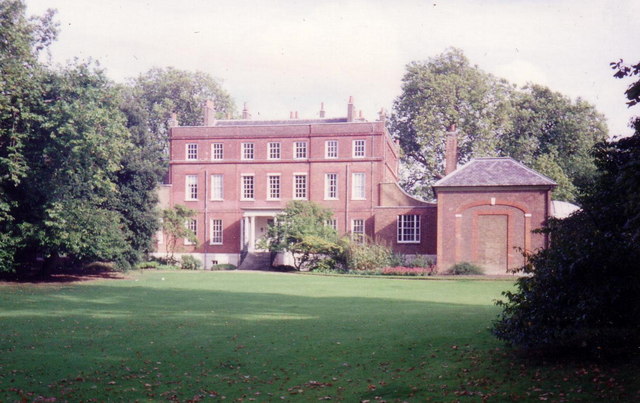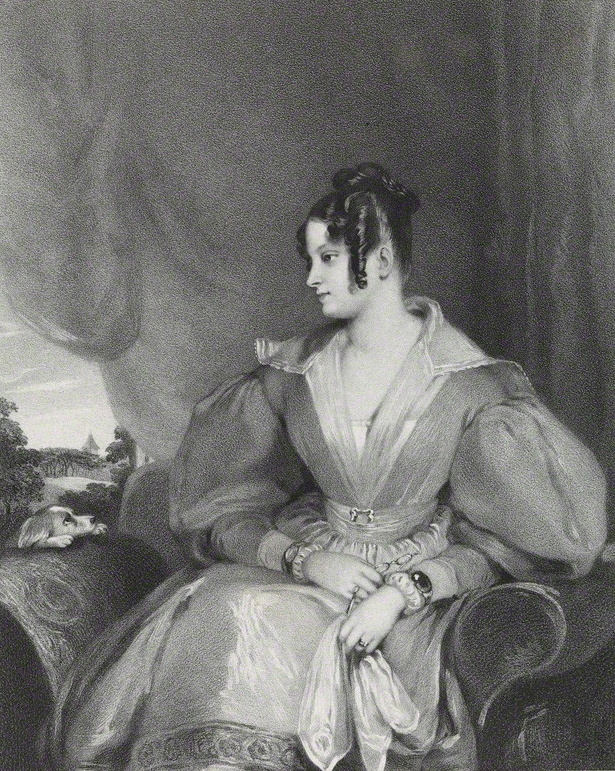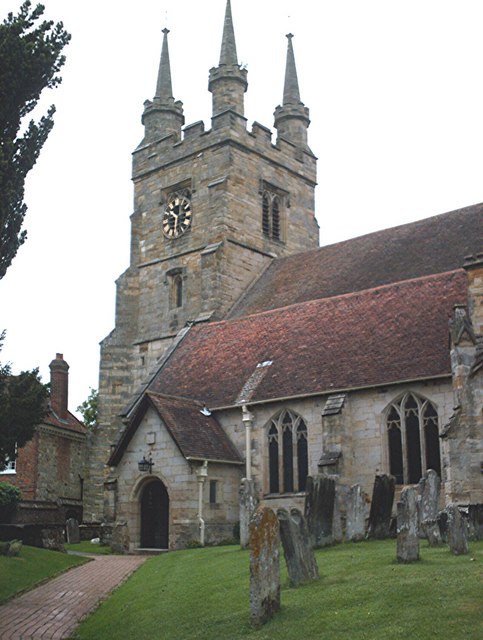by Susan Flantzer
© Unofficial Royalty 2024
Amelia Cary, Viscountess Falkland; Credit – Wikipedia
Amelia Cary, Viscountess Falkland was born Amelia FitzClarence on March 21, 1807, at Bushy House in the London Borough of Richmond upon Thames. She was the tenth of the ten children and the fifth of the five daughters of the future King William IV of the United Kingdom and his mistress Dorothea Jordan. Amelia’s paternal grandparents were King George III of the United Kingdom and Charlotte of Mecklenburg-Strelitz. Francis Bland, a stagehand, and his mistress Grace Phillips, an actress were her maternal grandparents.
From 1790 until 1811, before he became king, King William IV of the United Kingdom had a long-term relationship with actress Dorothea Jordan. Their relationship resulted in ten children who were given the surname FitzClarence. The surname comes from the Anglo-Norman word Fitz, meaning “son of” and Clarence, from King William IV’s title before he became king, Duke of Clarence.
Dorothea Jordan was born Dorothea Bland was born in County Waterford, Ireland, the daughter of Francis Bland, a stagehand, and his mistress Grace Phillips, an actress. Her mother encouraged Dorothea to enter the theater, and within a few years, she began to draw large crowds for her performances. She left Ireland in 1782 and moved to Leeds, England. It was at this point that she took the name Jordan. She performed for three years with the York Company, before being lured away in 1785 to move to the Royal Theatre, Drury Lane in London. By then, Dorothea was becoming a very popular performer and could be counted on to bring large crowds every night. It was at Drury Lane that her life would come to the attention of The Duke of Clarence several years later.


Amelia’s parents The Duke of Clarence (later King William IV) and Dorothea Jordan
In 1790, Dorothea was first noticed by The Duke of Clarence (later King William IV) while performing at Drury Lane. They quickly began an affair that would last for the next 21 years. Dorothea moved in with the Duke at his home, Clarence Lodge in Roehampton, London, England and later they moved to Bushy House in Bushy Park in Richmond upon Thames, London, England.

Bushy House, Amelia’s birthplace; By Stephen Williams, CC BY-SA 2.0, https://commons.wikimedia.org/w/index.php?curid=12574949
In 1797, King George III of the United Kingdom appointed his third son William, then Duke of Clarence, the ranger of Bushy Park. The position came with the residence Bushy House in Bushy Park. William and Dorothea lived there with their ten children until their relationship ended in 1811. William continued living there with his children and later with his wife Adelaide Saxe-Meinigen after they married in 1818.
The children of King William IV and Dorothea Jordan had an elder half-brother, William Henry Courtney, born around 1788 to an unknown mother, and named after his father whose given names were William Henry. Dorothea Jordan cared for William, and she was fond of him and he was fond of her. William served in the Royal Navy from 1803 until 1807 when his ship HMS Blenheim was lost in a gale off Madagascar. Despite an extensive search, no trace of the ship was ever found. 590 men were lost aboard HMS Blenheim, including King William IV’s eldest illegitimate son nineteen-year-old William Henry Courtney.
Nine of the ten children of King William IV and Dorothea Jordan were named after nine of William’s fourteen siblings. That one child was named Henry, William IV’s middle name.
Amelia’s nine siblings were:
- George FitzClarence, 1st Earl of Munster (1794 – 1842), married Mary Wyndham, had seven children
- Henry Edward FitzClarence (1795 – 1817), unmarried, died at age 22
- Sophia FitzClarence (1796 – 1837), married Philip Sidney, 1st Baron De L’Isle and Dudley, had four children
- Mary FitzClarence (1798 – 1864), married Charles Fox, no children
- Frederick FitzClarence (1799 – 1854), married Lady Augusta Boyle, had two children
- Elizabeth FitzClarence (1801 – 1856), married William George Hay, 18th Earl of Erroll, had four children
- Adolphus FitzClarence (1802 – 1856), unmarried
- Augusta FitzClarence (1803 – 1865), married (1) The Honorable John Kennedy-Erskine, had three children (2) Admiral Lord Federick Gordon-Hallyburton, no children
- Augustus FitzClarence (1805 – 1854), married Sarah Elizabeth Gordon, had six children
William and Dorothea’s children married into the British aristocracy and their many descendants include some notable people including sisters Princess Alexandra, Duchess of Fife and Princess Maud, Countess of Southesk (granddaughters of King Edward VII and daughters of Princess Louise, Princess Royal and Alexander Duff, 1st Duke of Fife, a descendant of Dorothea Jordan and King William IV), Duff Cooper, 1st Viscount Norwich (British diplomat, Cabinet member, author), John Crichton-Stuart, 7th Marquess of Bute (also known as Johnny Dumfries, racing driver), and David Cameron, Prime Minister of the United Kingdom.
By 1811, William was pressured by his family to find a suitable wife. At the time he was fourth in line for the throne following his elder brother The Prince of Wales, the future King George IV, George’s only child Princess Charlotte of Wales, and George’s next oldest brother who was childless Prince Frederick, Duke of York. William gave in to the pressure and ended his relationship with Dorothea but ensured she was well provided for. William became closer to the throne when his niece Princess Charlotte died in 1817 giving birth to a stillborn son. When King George IV died in 1830, William succeeded to the throne. Although William had ten children with Dorothea Jordan, his marriage with Adelaide of Saxe-Meiningen produced no surviving children. King William IV was succeeded by his niece Queen Victoria. Queen Victoria had relationships with her first cousins, King William IV’s illegitimate children. They are mentioned in Queen Victoria’s diaries when visiting Windsor Castle.
Amelia and her siblings had little contact with their mother Dorothea Jordan after 1811 when their father ended his relationship with her. After losing much of her savings when her daughter Augusta and her husband ran up large debts in her name, Dorothea’s health quickly began to decline. Virtually penniless, Dorothea Jordan died in Saint-Cloud, France on July 5, 1816, at the age of 54. She is buried in the local cemetery in Saint-Cloud.
From 1819 – 1822, Baron Franz Ludwig von Bibra was engaged to tutor Amelia and her sister Augusta in the classics and English. In June 1830, Amelia’s father succeeded his brother King George IV as King William IV.

Lucius Cary, 10th Viscount Falkland in 1865 after Amelia’s death; Credit – Wikipedia
On December 27, 1830, at the Royal Pavillion in Brighton, England, Amelia married Lucius Cary, 10th Viscount Falkland. Lucius, the son of Charles John Cary, 9th Viscount Falkland, who was killed in a duel in 1809, was educated at the Royal Military College, Sandhurst. Lucius served in the British Army from 1821 – 1830. Amelia’s father King William IV walked her down the aisle and gave her away. The ceremony was performed by Charles Richard Sumner, Bishop of Winchester and the couple spent their honeymoon at Cumberland Lodge in Windsor Great Park.
Amelia and Lucius had one son who predeceased his father and was childless:
- William Charles Frederick Cary, Master of Falkland (1831 – 1871), married Sarah Christiana Keighly, no children

Rudby Hall, the home of Amelia and Lucius in the distance; Credit – By Gordon Hatton, CC BY-SA 2.0, https://commons.wikimedia.org/w/index.php?curid=86032358
Amelia and Lucius lived at Rudby Hall, Hutton Rudby, Skutterskelfe, North Yorkshire, England. In 1839, Lucius inherited the Rudby estate from his aunt Elizabeth Cary who married Jeffrey Amherst, 1st Baron Amherst. There was a house on the site called Leven Grove. Amelia and Lucius had a new house, Rudby Hall, built on the site of the older house.
Lucius served in the House of Lords and on the Privy Council, and had several other positions:
- 1830 – 1837: Gentleman of the Bedchamber to his father-in-law King William IV
- 1840 – 1846: Lieutenant Governor of Nova Scotia
- 1842 – 1846: Captain of the Yeomen of the Guard
- 1848 – 1853: Governor of Bombay in India

Amelia’s burial site in the southwest corner of the churchyard at All Saints Church in Hutton Rudby; Credit – Wikipedia
In 1853, Lucius and Amelia returned from Bombay, India, and lived in their home in Yorkshire, where Lucius served as a magistrate. Amelia, aged fifty-one, died five years later, on July 2, 1858, at her home Rudby Hall in Hutton Rudby, Skutterskelfe, North Yorkshire, England. She is buried in the southeast corner of the churchyard at All Saints Church in Hutton Rudby.
Inside All Saints Church, there is a memorial plaque for Amelia that says:
This monument is erected in memory of Amelia, the loved and honoured wife of Lucius Bentinck Cary, 10th Viscount Falkland by her husband.
“Death: Ere though shalt stike another fair and wise, and good as she, time shall throw his dart at thee.
She was a daughter of King William the Fourth and the youngest sister of George, 1st Earl of Munster. She was born March 21st 1807 and died July 2nd 1858, aged 51 years.
She is buried in a vault in the southeast corner of the churchyard.
On November 10, 1859, Amelia’s widower Lucius married Elizabeth de Vere Beauclerk, Dowager Duchess of St Albans, born Elizabeth Gubbins, the widow of William Aubrey de Vere Beauclerk, 9th Duke of St Albans. Lucius Cary died on March 12, 1884, aged 80, in Montpellier, France where he was buried. He is remembered with a plaque in All Saints Church in Hutton Rudby, where his first wife Amelia is buried.
This article is the intellectual property of Unofficial Royalty and is NOT TO BE COPIED, EDITED, OR POSTED IN ANY FORM ON ANOTHER WEBSITE under any circumstances. It is permissible to use a link that directs to Unofficial Royalty.
Works Cited
- Beauclerk-Dewar, Peter & Powell, Roger. (2006). Right Royal Bastards – The Fruits of Passion. Burke’s Peerage & Gentry LLC.
- Flantzer, Susan. (2015). King William IV of the United Kingdom. Unofficial Royalty. https://www.unofficialroyalty.com/king-william-iv-of-the-united-kingdom/
- Lady Amelia FitzClarence Cary (1807-1858) – Find… (2015). Findagrave.com. https://www.findagrave.com/memorial/141944091/amelia-cary
- Mehl, Scott. (2020). Dorothea Jordan, Mistress of King William IV of the United Kingdom. Unofficial Royalty. https://www.unofficialroyalty.com/dorothea-jordan-mistress-of-king-william-iv-of-the-united-kingdom/
- Weir, Alison. (2008). Britain’s Royal Families – The Complete Genealogy. Vintage Books.
- Wikipedia Contributors. (2024). Amelia Cary, Viscountess Falkland. Wikipedia; Wikimedia Foundation.
- Wikipedia Contributors. (2023). Lucius Cary, 10th Viscount Falkland. Wikipedia; Wikimedia Foundation.
- Wikipedia Contributors. (2024). Rudby Hall. Wikipedia; Wikimedia Foundation.

























